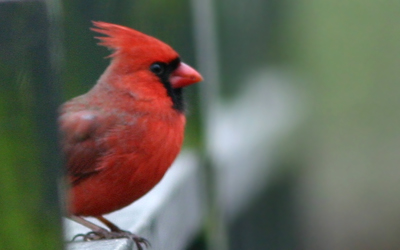One of the abundant benefits to keeping a nature journal, whether a blog or a book, is the opportunity to analyze species counts at your favorite birding spots over time. For example, I’ve been in the practice of visiting Van Cortlandt Park in the Bronx every January. The main draw is Rusty Blackbird, a species that winters there and can be located with virtual certainty at the wooden bridge connecting the sports fields to the Golf Course.
I dropped in to spot said blackbirds, a feat more difficult than I expected. In past years, the rusty blackbirds congregated in large, raucous flocks. While I wouldn’t describe them as confiding, they were possessed of the kind of swaggering confidence one typically associates with icterids. This year, I only found a couple of birds and they seemed downright skittish. I wonder if they caught wind of that grackle poisoning plot in Texas. What else could sap blackbird braggadocio?
While rusty and red-winged blackbirds were scarce, the other birds I’ve come to expect at this bridge were out in full force. Because locals often spread seed in this area, Black-capped Chickadees and Tufted Titmice present themselves in an utterly fearless fashion. White-throated and Song Sparrows graze below in good numbers while Northern Cardinals, Blue Jays, and Downy Woodpeckers bounce from tree to tree. Most pleasing were the White-breasted Nuthatches willing to perch within feet of my face. They were so close and quick that I couldn’t even snap a decent photo, but I’m hardly complaining.
The bridge isn’t the only hotspot this time of year. Actually, everything was pretty hot; 70 degrees at this time of year is downright scorching. Perhaps that’s why some of the species I expected didn’t show. Around Van Cortlandt Lake, I found Belted Kingfisher, but not Great Blue Heron, the usual fab four of Mallard, American, Black Duck, Canada Goose, and Mute Swan, but few other funky ducks. Yes, Green-winged Teal were there, but they’re popping up everywhere these days. But Northern Shoveler, a species I’ve come to associate with this area, was nowhere to be seen.
Of course, Hooded Mergansers mustered in their minor throngs, drakes gliding by sails aloft. These mergansers are as handsome a species as one could as for, but they’re not always the most interesting bird on the lake. Van Cortlandt Lake has been known to host some astonishing rarities, from the Mandarin Duck male we spotted years ago to the American White Pelican that dropped in just last month (missed that one!) The unexpected bird this time around was a lone Pied-billed Grebe. I don’t know why I’m always surprised to spot this grebe in winter as it seems to happen regularly, but surprised I was. Pleased as well, as the pied-bill in winter plumage has a small and subtle beauty all its own.

Northern Cardinal













Leave a Comment